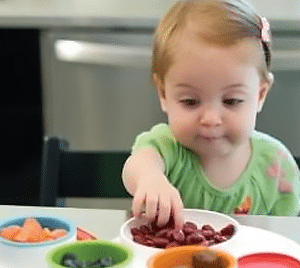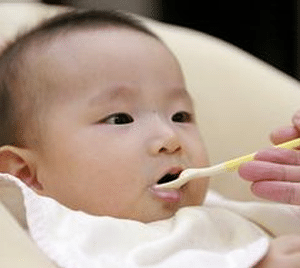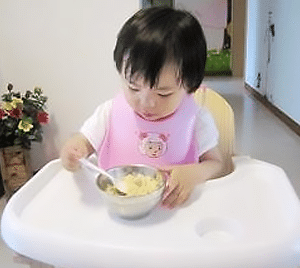
How do Nanny know my baby has had enough?
The nanny will let your baby decide when she has had enough. She knows when she is full. Babies who are full often start to show less interest in the food, start eating more slowly, or stop opening their mouths as wide. Your baby may even close her mouth and turn her head away from the spoon. Some babies cry and become unsettled. The experienced nanny will respect these signs of fullness and stop feeding.
How much should my baby eat?
Babies may not eat a lot a the beginning. Take it slowly and try to make it fun. It really depends on the baby and will vary enormously. Nanny will follow your baby’s lead and gradually build to one meal, then two, then three. As his solid-food intake goes up, nanny will then reduce the amount of milk you gave and balance it out. By the age of about a year the infant should be getting most of his calories from solid food.
What are the best foods to start with?
It’s fine to let your baby do some baby-led weaning if you want to, but it is advisable to use purees of single foods for young babies to start with. Parsnip, sweet potato, courgette, carrots, apples and bananas made into purees with the consistency of smooth yoghurt are ideal. You can use the water you boil them in to make the puree thinner if you want to. Baby rice is also good. Once the baby gets more confident you can start combining foods to get a healthy mix of carbohydrates, protein and dairy. Lentils are a great source of protein and iron.
Are there any foods that should not offer to baby?

Even if you start weaning at six months, it is recommended that you avoid any unpasteurised dairy products, mould-ripened cheeses, foods such as homemade mayonnaise, cake mixture or mousses that contain raw eggs, undercooked eggs and pates to reduce the risk of food poisoning. Any meat or fish should be well-cooked. Don’t add salt, sugar or honey to your baby’s food.
Should I start by offering one taste at a time?
Yes, always introduce any new food to your baby on its own just in case his system cannot tolerate it. This is especially important if you have a family history of food intolerances or allergies and you should let the nanny know. Some foods are so-called high-risk allergy foods, which means they are more likely to trigger a reaction. Examples of these foods are nuts, eggs, sesame seeds and dairy products. Having an experienced nanny can give good advice regards to feeding. Do contact NannySOS if you require any babysitting services.


